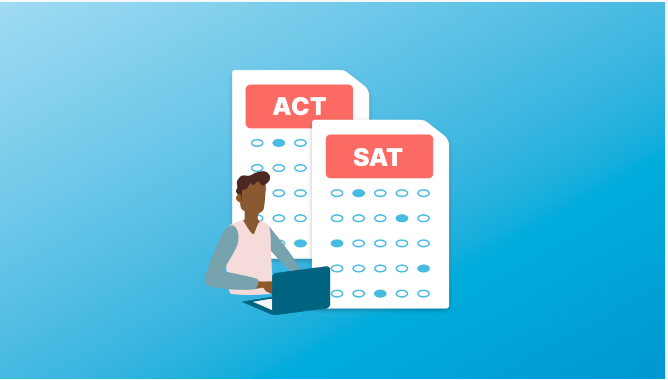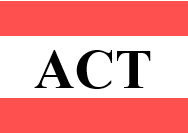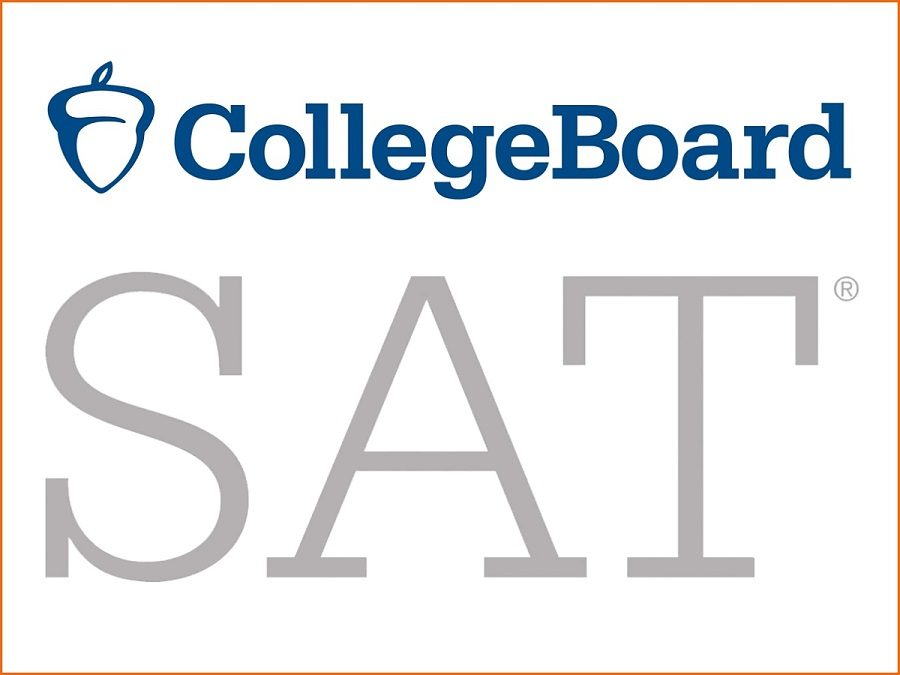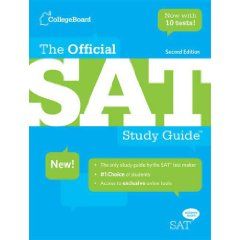For many college-bound students, one of the first big decisions is whether to take the SAT, the ACT, or both. While these tests have many similarities, they also have some unique features and content areas. If you’re aiming to prepare for both exams at once, you’ll need a smart and focused strategy.
Here’s a guide to understanding the unique content of each test and actionable tips to prepare efficiently for both.
Here’s the comparison chart which lists the common and different topics in both the exams.
SAT vs ACT Comparison Chart (Topic and Area Wise)
| Category | SAT | ACT | Common to Both |
| ? Math | -Complex numbers – Polynomial operations -Exponential functions -Data analysis (graphs, statistics) -Grid-in questions -Provided formula sheet | -Matrices -ALogarithms – Advanced trigonometry – No grid-in (all multiple choice) -No formula sheet | – Algebra – Geometry -Linear equations -Systems of equations –Basic statistics -Arithmetic |
| ? Reading | – Command of Evidence questions – Historical/founding documents – Charts/graphs in passages – Advanced vocabulary in context | – Paired passages – More direct reading questions | – Main idea – Inference – Author’s purpose – Detail questions |
| ?? Writing / English | – Grammar – Punctuation – Sentence structure -Effective language use – Rhetorical skills | – Grammar – Punctuation – Sentence structure – Effective language use – Rhetorical skills | (Nearly identical content and skills) |
| ? Science | – No separate science section (science integrated into reading/math with charts and graphs) | – Dedicated science section: – Data interpretation – Experimental design – Scientific reasoning | – Both test data interpretation and graph reading, but in different ways |
| ? Pacing & Timing | – Slower pace – Fewer questions, more time per question – No dedicated science section | – Faster pace – More questions, less time per question – Science section adds time pressure | – Both require time management |
| ? Essay / Writing | – No optional essay | – Optional writing section (argument-based essay) | — |
| ? Scoring | – 400–1600 total – Math (200–800) + Reading/Writing (200–800) – No penalties for wrong answers | 1–36 composite score – Average of English, Math, Reading, Science (each 1–36) – Optional Writing scored separately | – No guessing penalty on either exam |
Strategies to Prepare for Both Exams at the Same Time
1. Focus First on Shared Content
Start with core skills that appear on both:
- Algebra and geometry review
- Grammar and punctuation rules
- Reading comprehension strategies
Master these areas before branching into test-specific topics.
2. Make a Two-Column Tracker
Create a simple table or checklist:
- Column 1: SAT-only topics
- Column 2: ACT-only topics
As you study, dedicate 30–40% of your time to these unique areas, but make sure your base prep stays focused on the shared core.
3. Practice Both Pacing Styles
- ACT: Fast pace; practice under tight time limits
- SAT: Slower pace but often trickier questions
Use practice tests to switch gears between the two time styles.
4. Get Familiar With Unique Question Types
- For SAT: Practice grid-in math questions and evidence-based reading.
- For ACT: Sharpen your science section strategies and work on speed.
5. Use Official Practice Materials
- Use the Test organization Practice Test from Collegeboard or ACT website.
- Socrato also provides the Online and paper based test for SAT and ACT Exams.
- Socrato also offers the SAT vs ACT comparison test, which is a combined test.
6. Schedule Smartly
If you plan to take both exams:
- Take the SAT first if you’re stronger at reading analysis and data interpretation.
- Take the ACT first if you’re better at fast-paced multiple-choice and science reasoning.
Leave at least 3–4 weeks between test dates to allow for focused last-minute prep.
Final Takeaway
With a thoughtful plan, you can prepare for both the SAT and ACT at the same time without doubling your stress. Focus on shared content first, gradually layer in unique topics, and use smart practice and pacing drills. By understanding what sets each test apart, you’ll walk into both exams confident and well-prepared.










